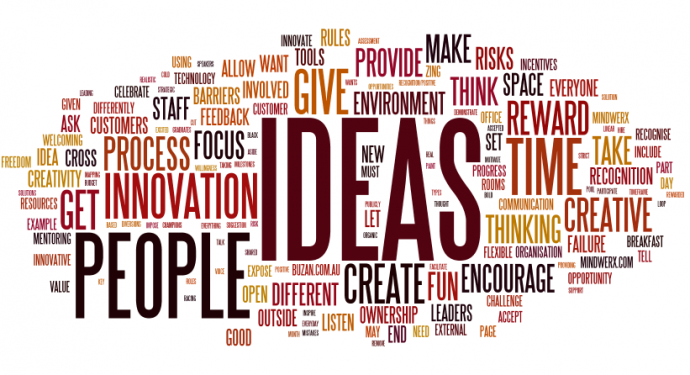 “That can’t possibly work! The roll out time will coincide with our busiest season. And the engineers are scrambling as it is. Siphoning off talent to work on this will handicap us.” Jeff bellowed, riled up by Amy’s presentation of a new product design.
“That can’t possibly work! The roll out time will coincide with our busiest season. And the engineers are scrambling as it is. Siphoning off talent to work on this will handicap us.” Jeff bellowed, riled up by Amy’s presentation of a new product design.
The air was suddenly sucked out of the conference room. Amy stood stock still at the whiteboard – everyone’s eyes riveted to her face.
She was newly promoted talent; coming up fast through the ranks of design engineers as a hard-working, creative and highly efficient team leader. In addition to her design skills, she worked well with people, which is why, Michael, the CEO had promoted her.
Now he was watching her from behind his owl-like glasses, waiting for a reaction to Jeff’s
attack, calm and curious.
Amy, took a few long breaths, lined up her feet on the carpet for balance and looked at Jeff directly. Then, quietly but distinctly, she said “I appreciate your perspective. You make some good points. Let me address why I think this the right time to begin development on this product and perhaps you can help flush out the details.”
Oxygen returned to the room. MIchael, nodded and said to himself, “This conflict is going to be productive.”
Conflict comes with a bad rap. It’s never pleasant, easy or what you’d choose off a Chinese menu. Yet, if you work for a healthy organization, it is an important part of big decisions. So you need to know how to “be with conflict” in a way that supports your brilliance, the organization you work for and yourself. (And for women, it is often particularly challenging.)
Learning to exhale goes a long way towards funding the ability to handle conflict. And balancing, in your sweet spot, is required as well. It also helps to depersonalize the conflict – not feeling that you are under attack, but rather your ideas – a hard stretch but necessary.
Yet these skills, hardwon for sure, and absolutely necessary, are insufficient if you want to be brilliant at what you do! They are critical first steps, but not what is at the heart of living into your brilliance.
So what is?
The big leap, a mile-high one, is to see conflict as generative.
Yep, generative…. a welcome arena to enter into armed with the knowledge that different perspectives often hone, polish and improve your idea…build it out or repair the parts that may be slightly flawed. Sometimes, conflict acts as the much needed fuel that allows you to bolster a design, a concept, a process. Sometimes only in the conflict can you find out the strength of your commitment. And if doesn’t serve up any of these, it may simply allow other’s energy a valid place to come to rest.
We grow up taught to “play nice”. And in most situations, it feels right. Yet breakthroughs in medicine, science, art – any human endeavor – did not come about by “playing nice”. Instead, questioning, arguing, debating- subverting the dominant paradigm – brought us breakaway advances in technology, architecture, health care and so on.
If we stifle our best ideas, our controversial designs, our “outside the lines” concepts from fear of conflict, what are we really doing? And how does that playing small in the face of conflict shrivel us more and more over time? It isn’t a way to work (or to be) and you don’t have to take it on.
Sure, there are times when a great concept dies on the drawing board, or is aborted in the conference room – sometimes for good reasons, sometimes not.
Yet, killing your own ideas or more often allowing them to wilt in the face of conflict untimately shuts you down – not to mention the loss to the group, company, corporation.
So what does seeing “conflict as generative” consist of? It’s a huge mind shift. A way of taking your outworn perspective and turning it on its head – in service of something greater – your brilliance! And it takes practice.
In the next few blogs, I’ll be guiding you through the steps that move you into this way of seeing and handling conflict. (I’ve mentioned a few of the physical ones already). If you are ready to
stand up for your brilliance, watch for the next in this series on Conflict is Generative.
Oh, and what happened to Amy? Jeff heard her out fully. He reluctantly helped her craft a plan that brought her design off the screen and into 3 dimensional reality. As they worked on it together, he became more enthusiastic, adding some of his own ideas. Jeff also grudgingly, developed some respect for Amy along the way. The new product went on to add significantly to third quarter profits, not just earnings, for the company. And Michael, the CEO proudly honored both of them at a celebratory dinner.
How have you handled conflict at your workplace? Share your comments and ideas below.
 “Flight 918, now boarding” blared the speakers. Tired after my day at a major university’s school of management, I prepared to return home, brimming with satisfaction.
“Flight 918, now boarding” blared the speakers. Tired after my day at a major university’s school of management, I prepared to return home, brimming with satisfaction.


